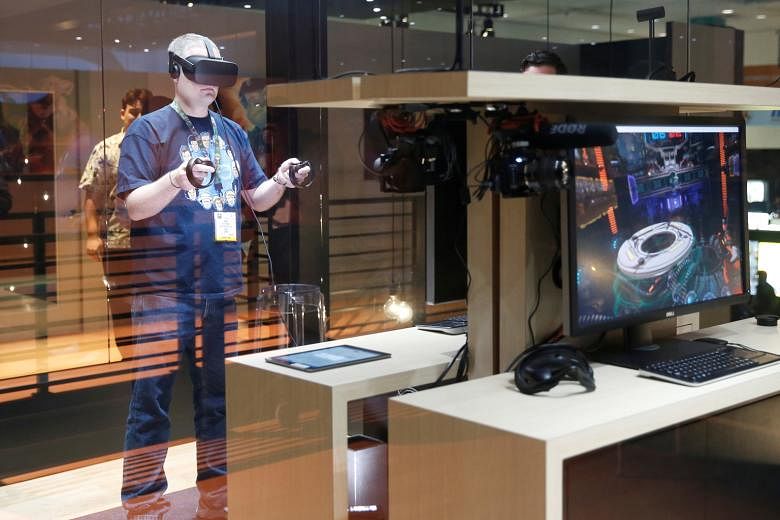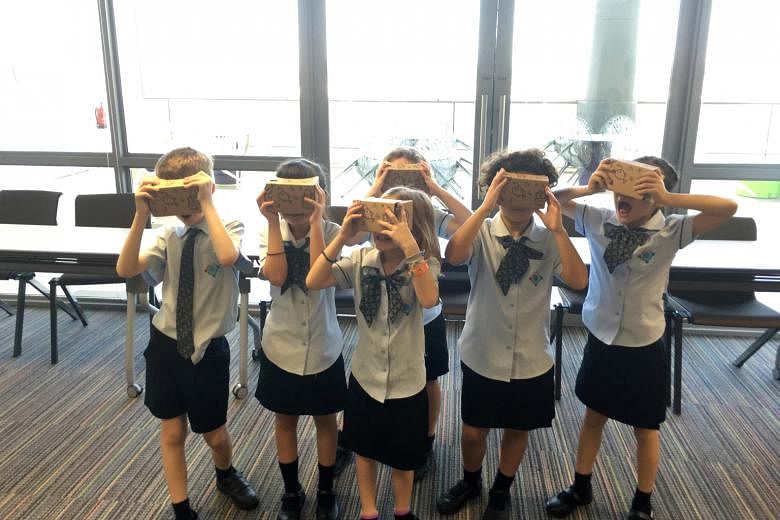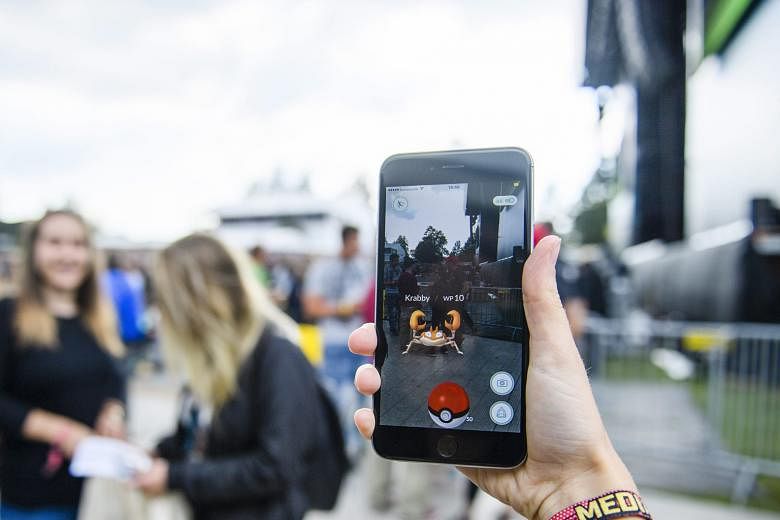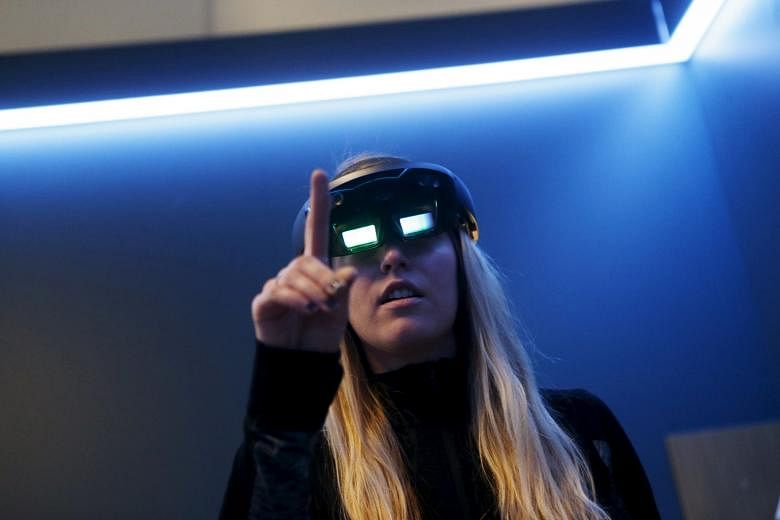VIRTUAL REALITY
This immerses the user in a simulated reality. Sensory experiences involving sight, hearing and even touch are artificially created to enable interaction with this environment.
Many inventors have tried to get virtual reality (VR) off the ground since the 1980s, but limited computer power and high costs stopped it from gaining popularity.
It began to make headway in the 1990s in the video-game industry - Virtuality was the first mass-produced VR entertainment system.
In 2014, Facebook sank US$2 billion (S$2.7 billion) into American tech start-up Oculus, which had created the Oculus Rift, a VR head-mounted display for gaming.
In the same year, Google released Google Cardboard, a low-cost VR headset made of cardboard and activated simply by placing a smartphone playing a video into its back.
AUGMENTED REALITY
Unlike VR, this lays holograms on top of a real-world scene.
Augmented reality (AR) makes it possible to get digital information without checking another device. For instance, Google Translate's AR tool can superimpose translations of printed text, such as street signs, when you point a phone camera at it.
Niantic's AR game, Pokemon Go, is currently taking the world by storm. In the game, players walk around real-life neighbourhoods to hunt down virtual Pokemon on their smartphone screens.
AR is also gaining prominence as a marketing tool. Customers can use it to shop for furniture by pointing their phones at the spot where they want to place a new sofa, or virtually try on pieces of clothing through "magic mirrors".
AR will make an appearance closer to home at this year's National Day Parade as the funpack includes a souvenir booklet that can activate a free AR app on mobile devices.
Pointing your phone camera at a picture of the National Stadium in the booklet will unlock a 3D time-lapse video of the facility's evolution.
MIXED REALITY
This combines aspects of both VR and AR, in that it allows users to see the real world as they do with AR, but also virtual objects as in VR.
Where mixed reality differs from AR is in viewer perspective, as it anchors the virtual elements to points in real space. This gives them the illusion of solid, three-dimensional depth, and allows the user to interact with them more closely.
In mixed reality, real objects can also be altered virtually.
Microsoft began this year to sell the HoloLens, a mixed-reality visor that is completely wire-free.
Olivia Ho





